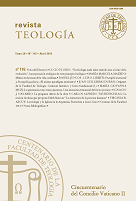Appearance as Trans-pearance. An existential situation of the homo poeticus
Palavras-chave:
arte, apariencia, trans-parencia, visión interior, realidad sensibleResumo
Dostoevskij claims beauty to have a salvific function (“beauty will save the world”), thus relating it to the domain of affectivity: indeed salvation does mean fullness of life. According to Matisse, “any art that deserves the name is religious”, i.e. it is endowed with the function of “mediating-uniting” different ontological orders. The concept of “inner vision”, which presupposes a revealing efficacy of the sensible reality and a negation of appearance as such, is the one accounting best for these statements. It crosses time and space: it exists in the culture of Ancient China, just as in Classical Greece and Late Antiquity, it is implicit all through the Middle Ages and it is found in some major modern painters (Kandinski, Chagall). In their testimonies, artists unanimously claim that a kind of ascesis is required, although not sufficient, in order to reach it: in fact, it consists in a revelation, being experienced as a gift, of the Meaning hidden in the sensible. Because of its triggering a transition from one ontological level to another (religious or syn-bolic valence) and of its consisting in an experience of the fullness of life, it is capable of a transforming effect (affective valence), too. This proper properly human way of “inner vision”, in which appearance (the sensible) becomes trans-pearance of what cannot be seen, turns out to be the best suitable one in the case of Christian art for worship.
Downloads
Downloads
Publicado
Como Citar
Edição
Secção
Licença
Direitos de Autor (c) 2018 Teología

Este trabalho encontra-se publicado com a Licença Internacional Creative Commons Atribuição-NãoComercial-CompartilhaIgual 4.0.














 Teología
Teología